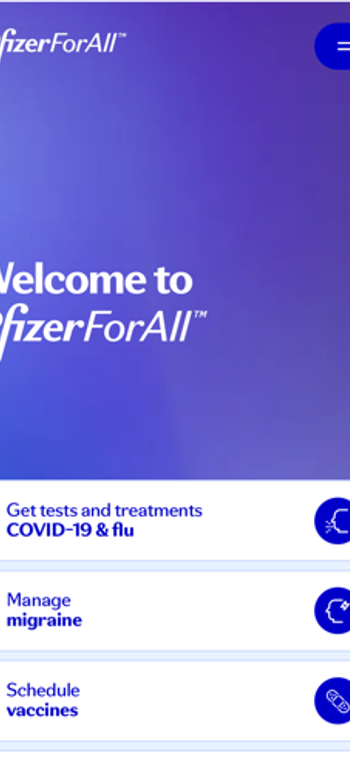
ICER Updates its Assessment Framework to Include New Measures of Value
ICER adds a more formal process to evaluate the diversity of clinical trials and an assessment of a product’s impact on patient and caregiver productivity. ICER also plans to evaluate how newer methods — which would consider the change of a drug’s price over time and disease severity — can be applied to its value assessment.
The Institute for Clinical and Economic Review (ICER) has updated the
The 2023 changes, which are effective for new evaluations going forward, are part of the organization’s ongoing effort to evolve as the science and the methods for evaluating evidence changes, ICER President Steven Pearson, M.D., said in an interview.
“We want to be as transparent as possible and provide a ‘rules of the road’ so that everybody — all stakeholders, patients, clinical experts — know how we’re going to do things and where they can participate,” Pearson said.
One of the more important changes will be to include an assessment of a drug’s impact from a societal perspective, for example on patient and caregiver productivity, what ICER calls “non-zero” inputs. Clinical trials often do not gather this information and health economists have been conservative when there is no data, which leads to a “zero” input on measures of societal impact.
“There are ongoing kind of debates about whether we should be looking at value more for the effects of treatment within the healthcare system, or whether we should look at the ways that it can sometimes have ripple effects outside what we usually mean when we say health,” Pearson said. “Sometimes treatments can really make a big difference in getting us back to work. We want to try to capture that when we are doing a societal perspective analysis.”
Pearson said ICER will try to find a “crosswalk” between pharmaceutical company data and the impact of a drug from a societal perspective. New academic work, he said, has tried to do that, and ICER will provide an estimate of productivity and other effects using published patient utility scores and U.S.-based patient use data.
“This is part of ongoing efforts to expand our ability to capture things quantitatively when we feel that we can, but it doesn't eliminate some concerns that it might be double counting certain things,” Pearson said.
Another change will the inclusion of a formal process for evaluating the demographic diversity of clinical trials to assess health equity. Pivotal trials of interventions under review will be rated on the relative diversity of race/ethnicity, sex, and age. Despite a lot of attention on diversity, clinical trials still overwhelming recruit White patients, according to an FDA
“There’s been a longstanding problem with recruiting patients for clinical trials who are representative of the diversity of both racial, ethnic and otherwise in our country,” Pearson said.
ICER has included discussions of diversity of trials in many of its evaluations but now there will be a more formal scale that Pearson hopes will incentivize manufacturers to spend the extra effort to make sure that their clinical trials are more representative.
ICER officials also indicated they will conduct a review of other methods of evaluation to determine how they might work for their value assessments. One method is dynamic pricing, which would factor into the cost-effectiveness analysis changes in price over a product’s lifetime. Pearson said this review is being done because of the provision in the Inflation Reduction Act to negotiate drug prices in Medicare will impact price growth and could change how products are valued over the long term. He said ICER will work with health economists to assess how this might work and possibly conduct a pilot program.
“This assessment is rarely done in academic health economics because it’s hard to make estimates around when the price will drop and by how much,” Pearson said. “The whole reason that we talk about cost-effectiveness is because of the basic idea that if we overpay for things now, we are doing harm now by drawing away resources that could be spent on other more helpful health interventions.”
ICER will also evaluate the potential application of Generalized Risk-Adjusted Cost-Effectiveness (GRACE) framework, which takes into account disease severity. Pearson said this method aims to measure the value of product at different points on a disease severity scale.
“Basically, it’s a way to modify the assessment that so that you give more credit to treatments for the most serious diseases and less credit to treatments for less serious diseases,” he said. “This is not a standard approach and none of the international health technology assessment agencies do this. Some of them do have a way to accommodate a quantified kind of element of severity. Assessing value of a therapy is an active area of health economics now and we think that this particular method does have promise.”
The use of dynamic pricing and the GRACE framework are supported by the nonprofit No Patient Left Behind (NPLB). The organization’s leaders believe that the methods used today do not show real-world valuations of health benefit.
A recently released
“We tried to reflect the actual workings of the marketplace, which is innovation, therapeutic competition, generic competition, and long societal benefit,” Peter Rubin, executive director of No Patients Left Behind, said in an interview.
Rubin expressed concern that the CMS’s effort to negotiate prices for Medicare will set an arbitrary price that may not reflect the value to patients in society. “Innovative medicines provide greater value to patients than we previously thought. We’re seeing real-world evidence that value is really not being transferred to patients. There’s no reason why a generic medicine should have high out-of-pocket costs, for example. As CMS implements the IRA, they also need ensure that those savings are passed on to the consumer as well.”
It’s important for payers who are making coverage decision today to consider how the price of a drug will change over time, Darius Lakdawalla, co-founder and chief scientific officer of EntityRisk, said in an interview.
“Today's price can’t be looked at in isolation because the price that we pay today also affects rates of innovation that will affect future patients,” he said. “If we look a reimbursement decision purely in isolation without thinking about the social value of the drug, the answer will be to drive the price down to as low as possible. But that results in a world in which we don’t have very much medical innovation for future patients.”
He said payers, particularly government payers, should be taking the perspective of their patients in mind. “Ultimately the issue for any economic analysis is that we need to quantify the benefits of the drugs to patients. Then we need to quantify the true cost of the drugs to patients. It’s really that simple when you think about it.”
Newsletter
Get the latest industry news, event updates, and more from Managed healthcare Executive.


















































